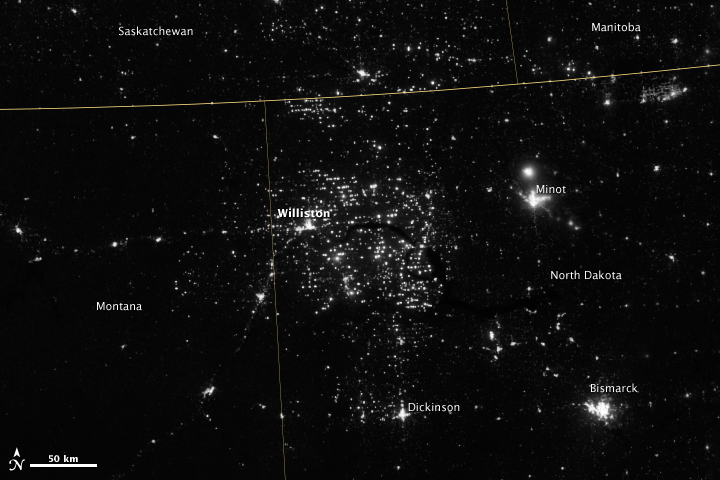

| Visitors Now: | |
| Total Visits: | |
| Total Stories: |

| Story Views | |
| Now: | |
| Last Hour: | |
| Last 24 Hours: | |
| Total: | |
Australian Wild Fires Seen From Space
This nighttime image of Australia was cropped from the Suomi NPP “Black Marble” released by NASA and the National Oceanic and Atmospheric Administration in December 2012.

Credit: NASA Earth Observatory/NOAA NGDC
Away from the cities, much of the night light observed by the NASA-NOAA Suomi NPP satellite in these images comes from wildfires. In the bright areas of western Australia, there are no nearby cities or industrial sites but, scientists have confirmed, there were fires in the area when Suomi NPP made passes over the region. This has been confirmed by other data collected by the satellite.
Closeup on the western portion of Australia, as seen in the Suomi NPP “Black Marble” imagery.

Credit: NASA Earth Observatory/NOAA NGDC › Larger image
The extent of the night lights in this area is also a function of composite imaging. These new images were assembled from data acquired over nine days in April 2012 and 13 days in October 2012. This means fires and other lighting (such as ships) could have been detected on any one day and integrated into the composite picture, despite being temporary phenomena.
Because different areas burned at different times when the satellite passed over, the cumulative result in the composite view gives the appearance of a massive blaze. These fires are temporary features, in contrast to cities which are always there.
Other features appearing in uninhabited areas in these images could include fishing boats, gas flaring, lightning, oil drilling, or mining operations, which can show up as points of light. One example is natural gas drilling in the Bakken Formation in North Dakota.

In daylight, our big, blue marble is all land, oceans and clouds. The night, on the other hand, is electric. This video provides a narrated tour of some highlights of the new Suomi NPP Earth at night imagery, including a look at the wildfires in Australia.


